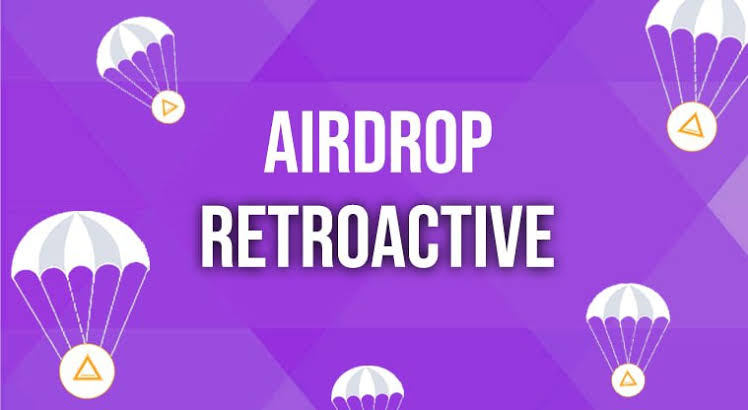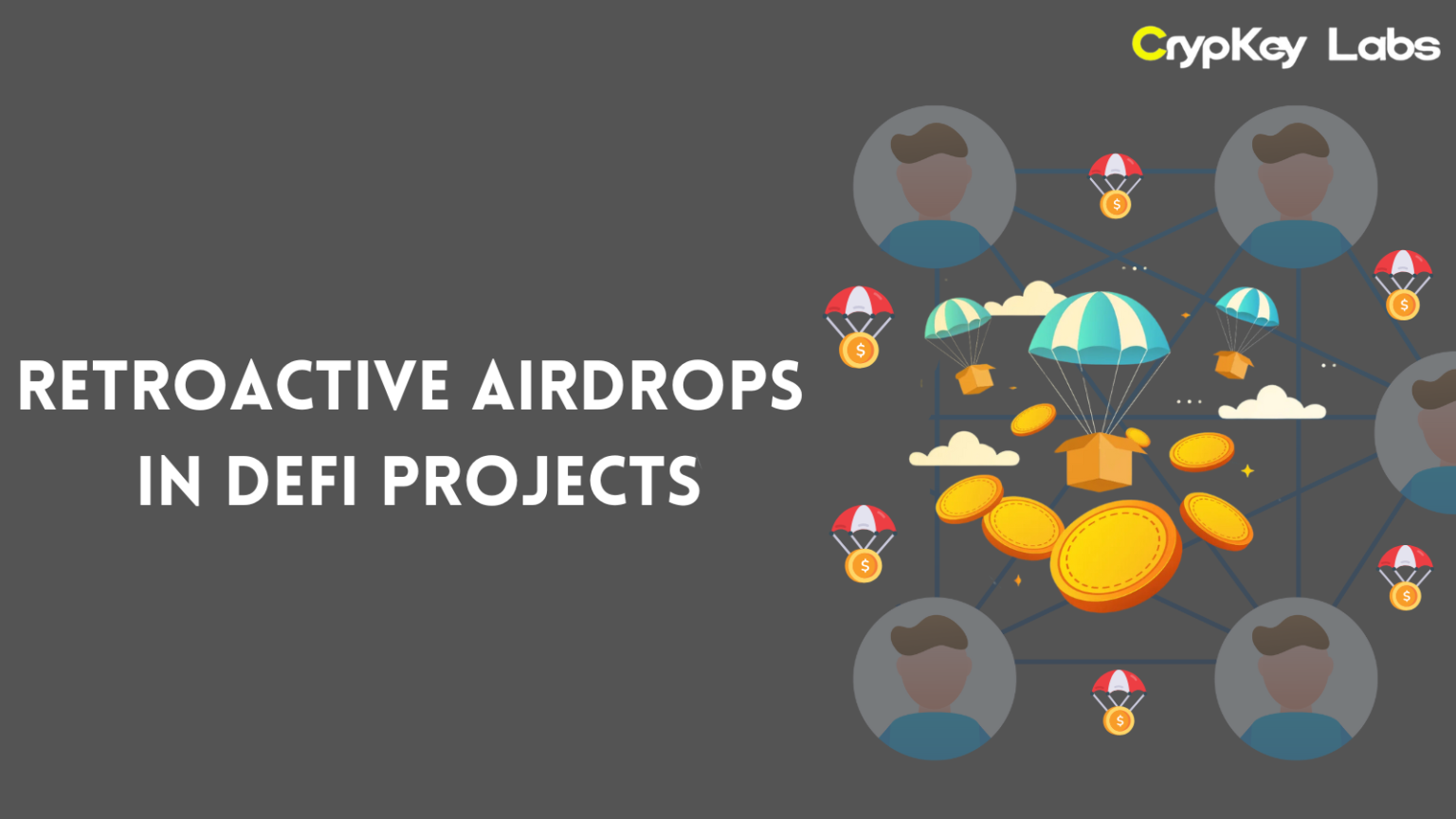If you’ve been following the world of cryptocurrency, you’ve probably heard about airdrops. They’re one of those buzzworthy terms that spark interest among crypto enthusiasts and newcomers alike. But what exactly are retroactive airdrops, and how do they fit into the DeFi (Decentralized Finance) landscape? Grab your favorite beverage, and let’s dive into the fascinating world of retroactive airdrops!
What Are Airdrops?
First, let’s get a clear understanding of airdrops. In the crypto realm, an airdrop refers to the distribution of tokens or coins to multiple wallet addresses, typically for free. Airdrops are often used as a marketing strategy to promote a new project, reward loyal users, or distribute tokens after a protocol upgrade.
Types of Airdrops
There are several types of airdrops, but for our purposes, we can categorize them mainly into two: standard airdrops and retroactive airdrops.
- Standard Airdrops: Airdrops typically announce their details in advance and require users to complete specific tasks, such as following social media accounts, joining a Telegram group, or signing up for a newsletter. After users complete these tasks, they receive the promised tokens.
- Retroactive Airdrops: Now, here’s where things get interesting! Retroactive airdrops reward users based on their past interactions with a project; in contrast, they do not require users to perform specific actions to qualify. This means if you’ve previously engaged with a DeFi project—whether by trading, providing liquidity, or using their platform—you might be eligible for a retroactive airdrop without even knowing it!
What Are Retroactive Airdrops?
So, what exactly are retroactive airdrops? Simply put, these are token distributions that reward users based on their previous engagement with a DeFi project. Instead of announcing an airdrop and asking for tasks to be completed, projects analyze past user activity to determine who qualifies for the tokens.
Why Are Retroactive Airdrops Significant?
Retroactive airdrops have become a popular mechanism in the DeFi space for a few reasons:
- Community Engagement: They incentivize users to interact with a platform, knowing that their previous activities could be rewarded in the future.
- Building Loyalty: By rewarding existing users, projects can foster loyalty and strengthen their community.
- Attracting New Users: When word gets out about a retroactive airdrop, it can attract new users who want to get involved in a project that appreciates its community members.
How Do Retroactive Airdrops Work?
Now that we understand what retroactive airdrops are, let’s break down how they actually work.
Eligibility Criteria
The first step for a DeFi project considering a retroactive airdrop is determining the eligibility criteria. Here are some common factors that projects might use:
- Transaction History: Users who have made trades or interacted with the platform within a specific timeframe may qualify.
- Liquidity Provision: Those who provided liquidity to decentralized exchanges (DEXs) or other protocols may also be considered.
- Token Holders: Holding specific tokens in your wallet can make you eligible for airdrops.
Each project will have its unique criteria, and it often comes down to how they want to reward their users. The key point is that you don’t have to do anything special at the time of the airdrop—you just need to have engaged with the project previously.
The Distribution Process
Once a project determines the eligible participants, it can announce the retroactive airdrop. Here’s how the distribution typically works:
- Announcement: The project publicly announces the retroactive airdrop, often providing details about the amount of tokens to be distributed and the criteria for eligibility.
- Token Distribution: After the announcement, tokens are distributed automatically to eligible wallets. Users don’t need to claim them manually, which adds to the excitement.
- Community Reaction: The community usually responds with enthusiasm as users check their wallets to see if they received tokens. This can create a buzz around the project, further encouraging engagement.
Examples of Successful Retroactive Airdrops
To illustrate the concept further, let’s look at a couple of notable examples:
- Uniswap: One of the most famous retroactive airdrops occurred in September 2020 when Uniswap distributed 400 UNI tokens to every wallet that had interacted with their platform before a certain date. This retroactive airdrop rewarded early users and instantly made them stakeholders in the project.
- 1inch: The 1inch exchange also carried out a retroactive airdrop to users who had previously interacted with the platform. Those who had used the DEX were pleasantly surprised to find tokens in their wallets without any prior announcement.
These examples showcase how retroactive airdrops can generate excitement, build community trust, and attract attention to a project.
Benefits of Retroactive Airdrops
Now that we know how retroactive airdrops work, let’s explore the benefits they bring to both projects and users.
For Projects
- Enhanced Community Engagement: By rewarding users for their previous activities, projects encourage ongoing engagement and foster a sense of community.
- Attracting New Users: The news of a retroactive airdrop can attract new users who want to get in on the action, ultimately growing the project’s user base.
- Building Brand Loyalty: When users feel valued and appreciated, they’re more likely to stick around, become advocates, and share the project with others.
For Users
- Unforeseen Rewards: Users often find themselves receiving tokens without needing to perform additional tasks, which feels like a pleasant surprise.
- Ownership in Projects: Retroactive airdrops allow users to become stakeholders in projects they support, giving them a vested interest in the project’s success.
- Incentives to Participate: Knowing that past interactions could lead to future rewards encourages users to engage more actively with DeFi projects.
Risks and Considerations
While retroactive airdrops offer numerous advantages, there are also risks and considerations to keep in mind.
Potential for Market Manipulation
Since retroactive airdrops can attract new users looking to take advantage of the opportunity, there’s potential for market manipulation. Users may engage with a project solely to qualify for the airdrop, leading to temporary price volatility.
Token Value and Liquidity Impact
A sudden influx of tokens into the market can lead to dilution of value. If too many users dump their newly acquired tokens, it can negatively impact the overall price and liquidity of the token.
Regulatory Concerns
As the cryptocurrency landscape continues to evolve, regulatory scrutiny around airdrops and token distributions is increasing. Projects need to be aware of potential legal implications and ensure compliance with applicable regulations.
How to Prepare for Retroactive Airdrops
If you’re interested in potentially benefiting from retroactive airdrops, here are some tips to help you prepare:
Engage with DeFi Projects
Participate in DeFi projects by trading, providing liquidity, or using their services. The more you engage, the better your chances of qualifying for an airdrop.
Stay Informed
Keep an eye on announcements from DeFi projects and follow them on social media. Many projects will announce upcoming retroactive airdrops, giving you a heads-up about potential rewards.
Hold Tokens
If you believe in a project, consider holding their tokens in your wallet. Some projects may reward existing token holders with airdrops.
Conclusion
Retroactive airdrops are an exciting and innovative way for DeFi projects to reward their loyal users while attracting new ones. They represent a shift in how token distributions are approached, moving from task-oriented rewards to recognizing the value of past interactions.
As the DeFi space continues to grow, retroactive airdrops are likely to become more common. By engaging with DeFi projects, staying informed, and being active in the community, you can increase your chances of benefiting from these unexpected rewards. So, keep your eyes peeled—you never know when a retroactive airdrop might land in your wallet!







